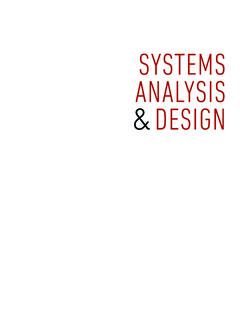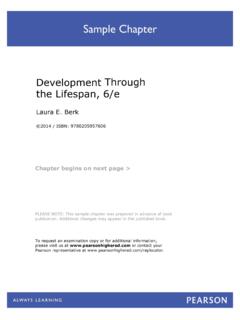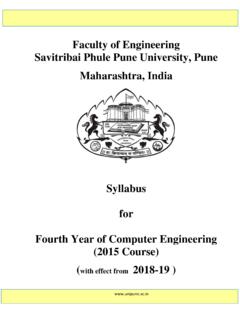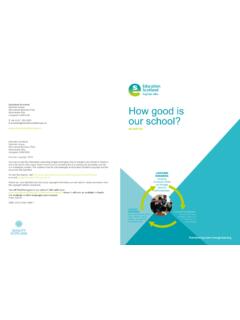Transcription of Integrating Educational Technology into Teaching ...
1 Integrating Educational Technology into Teaching : Transforming learning Across RoblyerNova Southeastern University (retired)Joan E. HughesThe University of Texas at Austin330 Hudson Street, NY NY 111/30/17 6:29 AMCredits and acknowledgments for materials borrowed from other sources and reproduced, with permission, in this textbook appear on the appropriate page within the effort has been made to provide accurate and current Internet information in this book. However, the Internet and information posted on it are constantly changing, so it is inevitable that some of the Internet addresses listed in this textbook will 2019, 2016, 2013, 2010 by Pearson Education, Inc. All rights reserved. Printed in the United States of America. This publication is protected by Copyright and permission should be obtained from the publisher prior to any prohibited reproduction, storage in a retrieval system, or transmission in any form or by any means, electronic, mechanical, photocopying, recording, or likewise.
2 To obtain permission(s) to use material from this work, please visit of Congress Cataloging-in-Publication DataNames: Roblyer, M. D., author. | Hughes, Joan E., : Integrating Educational Technology into Teaching : transforming learning across disciplines / Roblyer, Nova Southeastern University (retired), Joan E. Hughes, The University of Texas at : Eighth Edition. | New York : Pearson Education, Inc., [2018] | Audience: Ages: 18+Identifiers: LCCN 2017043408| ISBN 9780134746418 | ISBN 0134746414 Subjects: LCSH: Educational Technology United States. | Computer-assisted instruction United States. | Curriculum planning United : LCC .R595 2018 | DDC dc23LC record available at 9 8 7 6 5 4 3 2 1 Student EditionISBN 10: 0-13-474641-4 ISBN 13: 978-0-13-474641-8 Editorial Director: Kevin DavisPortfolio Manager: Drew BennettManaging Content Producer: Megan MoffoSenior Content Editor: Max Effenson ChuckContent Producer: Yagnesh JaniPortfolio Management Assistant: Maria FelibertyDigital Development Editor: Krista SlavicekSenior Digital Producer: Allison LongleyExecutive Product Marketing Manager: Christopher BarryExecutive Field Marketing Manager: Krista ClarkProcurement Specialist: Deidra SmithCover Design: Studio MontageCover Art: Hero Images/Getty Images; lisegagne/Getty Images; KaPeSchmidt/Getty Images.
3 Syda Productions/ShutterstockEditorial Production and Composition Services: SPi GlobalFull-Service Project Manager: Heidi Aguiar, SPi GlobalPrinter/Binder: RR DonnelleyCover Printer: Phoenix 211/30/17 6:29 AMFor Bill and Paige Wiencke, whose love is, as Arthur Clarke said of advanced Technology , indistinguishable from magic. MDRFor my father Thomas A. Hughes (1933 2017) whose commitment to education and lifelong learning is my inspiration. 311/30/17 6:29 AMivM. D. Roblyer was a Technology -using professor and contributor to the field of educa-tional Technology for 35 years. She authored or coauthored hundreds of books, mono-graphs, articles, columns, and papers on Educational Technology research and practice. Her other books for Pearson Education include Starting Out on the Internet: A learning Journey for Teachers; Technology Tools for Teachers: A Microsoft Office Tutorial (with Steven C.)
4 Mills); Educational Technology in Action: Problem-Based Exercises for Technology Integra-tion; and the most recent text, Introduction to Instructional Design for Traditional, Online, and Blended Environments (2015).Dr. Roblyer began her exploration of Technology s benefits for Teaching in 1971 as a graduate student at Pennsylvania State University, one of the country s first suc-cessful instructional computer training sites, where she helped write tutorial literacy lessons in the Coursewriter II authoring language on an IBM 1500 dedicated instruc-tional mainframe computer. While obtaining a doctorate in instructional systems at Florida State University, she worked on several major courseware development and training projects with Control Data Corporation s PLATO system. In 1981 1982, she designed one of the early microcomputer software series, Grammar Problems for Prac-tice, for the Milliken Publishing Roblyer retired in 2015 after having served as teacher, professor, graduate stu-dent mentor, doctoral student dissertation chair and committee member, and leader in shaping Educational Technology s changing role since 1969.
5 She lives in Chattanooga, Tennessee, where she is active in local political and community work. She is married to fellow Florida State alumnus Dr. William R. Wiencke and proud mother of daugh-ter Paige Roblyer E. Hughes has been a Technology -using educator and contributor to the educa-tional Technology field for more than 25 years and has authored or coauthored more than 100 journal articles, book chapters, proceedings, research conference papers, and practitioner conference papers earning a bachelor of arts degree in English from Pomona College, she began working in the Educational Technology field as an elementary and middle school com-puter teacher in Silicon Valley area of California in the early 1990s. She presented often at the CUE Conference (known then as Computer-Using Educators) and coauthored her first book, The CompuResource Book, a collection of Technology -supported lessons.
6 Later, she pursued her doctorate in Educational psychology with emphasis on cognition and Technology at Michigan State University where she taught courses for preservice teachers in Michigan and inservice teachers internationally in Korea, Japan, Thailand, and Eng-land. Her earliest research developed the concept of technological pedagogical content knowledge (TPCK), a theory generated from case studies of English teachers learning and use of technologies in schools. This theory has been adapted and adopted , Dr. Hughes is Associate Professor of learning Technologies at The Uni-versity of Texas at Austin where she conducts research and teaches about how teachers and K 12 students use technologies in and outside the classroom for subject-area learn-ing and how school leaders support classroom Technology integration. She serves on editorial and review boards for several Teaching and Technology journals and has contrib-uted to leadership of Technology -related special interest groups.
7 She is highly supportive of her students Educational objectives and has guided 47 doctoral and 45 master of arts and master of education degree students to complete dissertations, theses, or is married to Lee Klancher, a writer, photographer, and publisher (Octane Press). They spend time walking their dogs, running, biking, cooking, and eating in Austin and around the the 411/30/17 6:29 AMvAbout This BookDuring a time when nearly everything else is changing rapidly and radically, the mis-sion of this textbook has remained steady and consistent: to reflect the burgeoning, evolving role of Technology in education. The book s 20-year history has always docu-mented new and significant transitions in the role of Technology in education, and the eighth edition continues that work. But this edition also reflects a new kind of transi-tion with Joan E. Hughes playing a lead role in the authoring edition reflects fresh, new perspectives on using Technology in teacher learn-ing and leadership, an emphasis on transformative Technology integration in the classroom, and content-based Technology integration.
8 The text includes four sections that position the reader as a teacher learner and leader of transformative Technology integration. The first section provides the historical underpinnings of the field that inform our current practices, the learning theories that shape pedagogy, and a technol-ogy integration planning model that leads to Technology -supported pedagogy that is responsive to instructional or learning challenges. It provides an extensive review of the mindsets and practices of teacher Technology leaders who are problem solvers, use connected learning strategies to continually learn and engage in the profession, build a compelling online professional identity, and employ a personal rationale for using Technology in all decision making. The second and third sections introduce the tech-nological resources that support Teaching and learning . The second section introduces technologies for general productivity activities and instructional software for learning content.
9 The third section reviews how the web supports Teaching and learning . It shares ways to access web-based content and engage in web-based communication, collaboration, design, creation, and making. Ultimately, educators use all these tech-nological resources to build blended or online learning lessons or curricula. The fourth section continues this book s commitment to Technology integration in disciplinary content areas with a chapter specific to the following content areas: special education; English and language arts (ELA); second and foreign languages; science, Technology , engineering, and mathematics (STEM); social studies; music and art; and physical and health education. We go well beyond describing the technical features and capabilities of 21st-century Technology tools to focus steadfastly on the research-based Teaching and learning strategies that these resources can support in content all eight editions of this book, we have strived to develop an enlightened view of Technology in education by using the following guidelines on best practices in matching the needs of the Educational community with Technology s capabilities.
10 Good pedagogy comes first. Our experience with Educational technologies has shown more clearly than ever that the interaction between teachers and students remains an essential quality of effective education. This textbook proposes that technologies are, above all, channels for helping teachers communicate better with students ways of making their instructional relationships more meaningful and productive. Technologies can make good Teaching even better; it cannot make bad Teaching good. Consequently, Technology -using teachers can never be forces for improved education unless they are first and foremost informed, knowledgeable shapers of their craft. Before Integrating Technology into their Teaching , educators must know a great deal, for example, about why there are different views on appro-priate Teaching strategies, how societal factors and learning theories have shaped these views, and how each strategy can address differing 511/30/17 6:29 AMvi Preface Technology is us.











